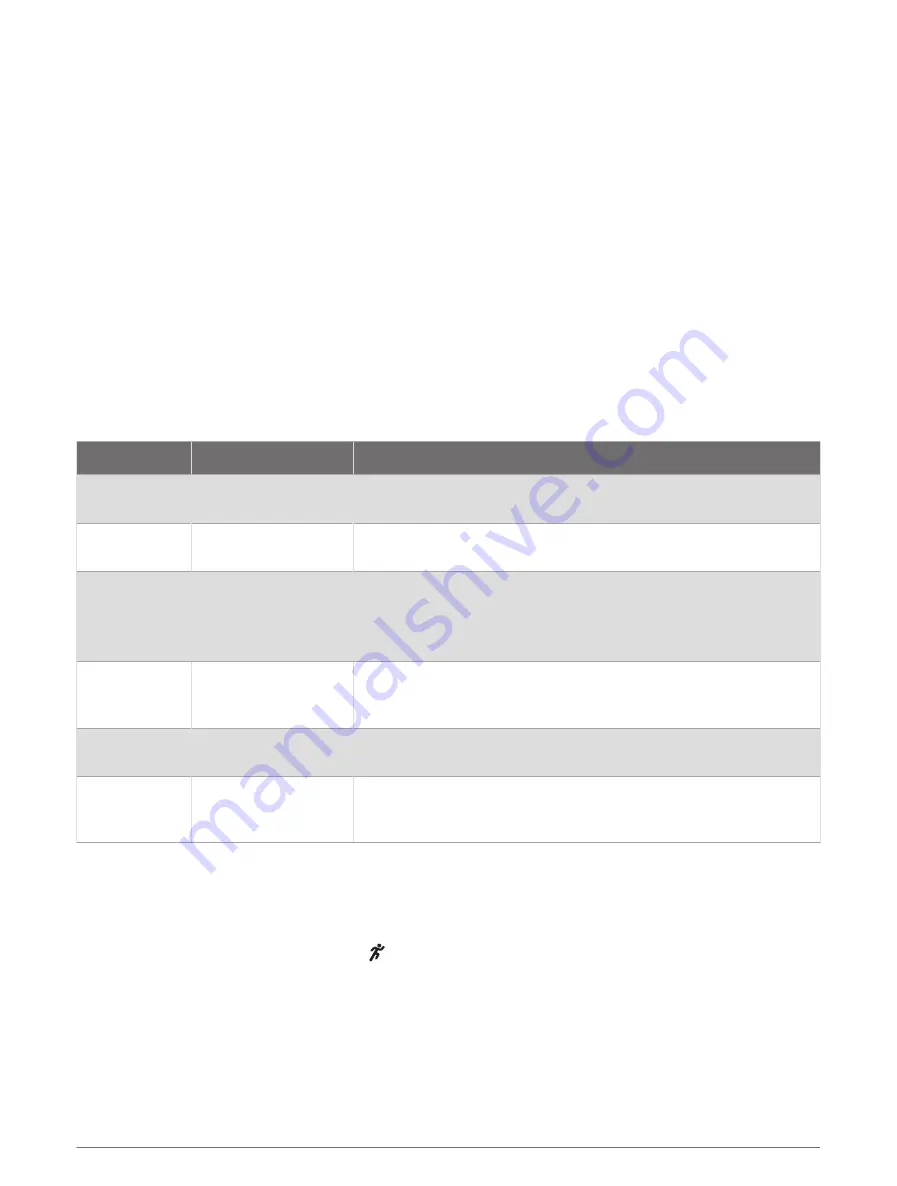
Tips for Recording Running Pace and Distance
• Update your Descent watch software (
).
• Complete several outdoor runs with GPS and your connected HRM-Pro series accessory. It's important that
your outdoor range of paces matches your range of paces on the treadmill.
• If your run includes sand or deep snow, go to the sensor settings, and turn off Auto Calibrate.
• If you previously connected a compatible foot pod using ANT+ technology, set the foot pod status to Off, or
remove it from the list of connected sensors.
• Complete a treadmill run with manual calibration (
Calibrating the Treadmill Distance, page 34
).
• If automatic and manual calibrations don't seem accurate, go to the sensor settings, and select HRM Pace &
Distance > Reset Calibration Data.
NOTE: You can try turning off Auto Calibrate, and then manually calibrate again (
).
Running Dynamics
Running dynamics is real-time feedback about your running form. Your Descent watch has an accelerometer
to calculate five running form metrics. For all six running form metrics, you must pair your Descent watch with
the HRM-Pro series accessory or other running dynamics accessory that measures torso movement. For more
information, go to
garmin.com/performance-data/running
Metric
Sensor Type
Description
Cadence
Watch or compatible
accessory
Cadence is the number of steps per minute. It displays the total
steps (right and left combined).
Vertical oscil
lation
Watch or compatible
accessory
Vertical oscillation is your bounce while running. It displays the
vertical motion of your torso, measured in centimeters.
Ground contact
time
Watch or compatible
accessory
Ground contact time is the amount of time in each step that you
spend on the ground while running. It is measured in milliseconds.
NOTE: Ground contact time and balance are not available while
walking.
Ground contact
time balance
Compatible accessory
only
Ground contact time balance displays the left/right balance of your
ground contact time while running. It displays a percentage. For
example, 53.2 with an arrow pointing left or right.
Stride length
Watch or compatible
accessory
Stride length is the length of your stride from one footfall to the next.
It is measured in meters.
Vertical ratio
Watch or compatible
accessory
Vertical ratio is the ratio of vertical oscillation to stride length. It
displays a percentage. A lower number typically indicates better
running form.
Tips for Missing Running Dynamics Data
This topic provides tips for using a compatible running dynamics accessory. If the accessory is not connected
to your watch, the watch automatically switches to wrist-based running dynamics.
• Make sure you have a running dynamics accessory, such as the HRM-Pro series accessory.
Accessories with running dynamics have on the front of the module.
• Pair the running dynamics accessory with your watch again, according to the instructions.
• If you are using the HRM-Pro series accessory, pair it with your watch using ANT+ technology, rather than
Bluetooth technology.
• If the running dynamics data display shows only zeros, make sure the accessory is worn right-side up.
NOTE: Ground contact time and balance appears only while running. It is not calculated while walking.
REMEMBER: Ground contact time balance is not calculated with wrist-based running dynamics.
Sensors and Accessories
121
Summary of Contents for DESCENT MK3 Series
Page 1: ...DESCENT MK3SERIES Owner sManual ...
Page 10: ......
Page 195: ......
Page 196: ...support garmin com GUID 9183E86B 2399 4CFC AB50 EAFC6D6ED326 v1 November 2023 ...






























